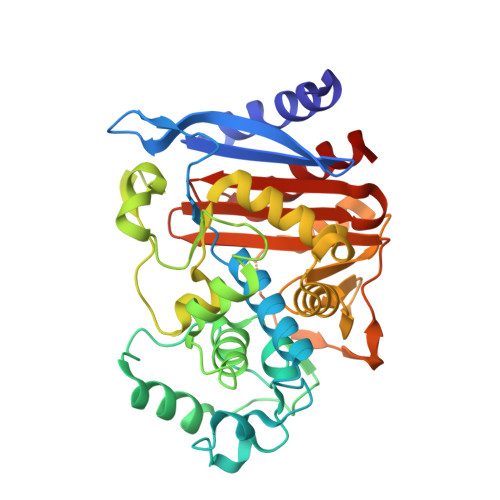Structure-based discovery of a novel, noncovalent inhibitor of AmpC beta-lactamase.
Powers, R.A., Morandi, F., Shoichet, B.K.(2002) Structure 10: 1013-1023
- PubMed: 12121656
- DOI: https://doi.org/10.1016/s0969-2126(02)00799-2
- Primary Citation of Related Structures:
1L2S - PubMed Abstract:
beta-lactamases are the most widespread resistance mechanisms to beta-lactam antibiotics, and there is a pressing need for novel, non-beta-lactam drugs. A database of over 200,000 compounds was docked to the active site of AmpC beta-lactamase to identify potential inhibitors. Fifty-six compounds were tested, and three had K(i) values of 650 microM or better. The best of these, 3-[(4-chloroanilino)sulfonyl]thiophene-2-carboxylic acid, was a competitive noncovalent inhibitor (K(i) = 26 microM), which also reversed resistance to beta-lactams in bacteria expressing AmpC. The structure of AmpC in complex with this compound was determined by X-ray crystallography to 1.94 A and reveals that the inhibitor interacts with key active-site residues in sites targeted in the docking calculation. Indeed, the experimentally determined conformation of the inhibitor closely resembles the prediction. The structure of the enzyme-inhibitor complex presents an opportunity to improve binding affinity in a novel series of inhibitors discovered by structure-based methods.
Organizational Affiliation:
Department of Molecular Pharmacology and Biological Chemistry, Northwestern University, 303 East Chicago Avenue, IL 60611, USA.















